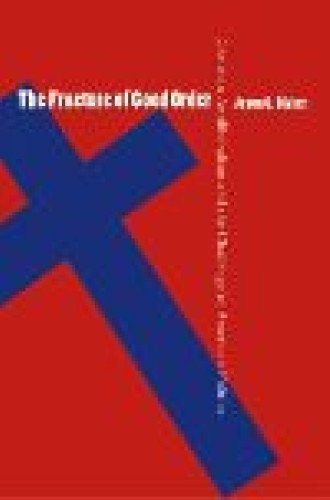The Fracture of Good Order: Christian Antiliberalism and the Challenge to American Politics
The relationship between Christianity and a liberal political order increasingly preoccupies academics. Liberal political theorists worry about the role of religion in public life, and have invented ingenious theories to try and justify limitations on that role. (Curiously enough, these theories began to proliferate when the Religious Right became a significant force in American politics.) Conservatives, on the other hand, call for a larger religious presence in public life, and tend to see political religion not as a threat to the health of democracy, but as a source of vitality for a polity sorely lacking in civic awareness and commitment.
Jason C. Bivins, who teaches in the department of religious studies at North Carolina State University, attempts to dig more deeply into how political religion might strengthen or threaten democracy. Bivins believes that “Christian antiliberalism,” a term he coined, names a distinctive style of Christian practice that promises to play an increasingly important role in American politics. Most of his book is devoted to a sociological account of three examples of Christian antiliberal practice: the Sojourners Community of Washington, D.C.; the New Christian Right; and the Jonah House Community of Baltimore.
These groups are quite disparate, and the conservative politics of the New Christian Right is at odds with the radical antimilitarism of the Berrigan brothers (Daniel and Philip) and the Jonah House Community. But Bivins believes that more than a profession of Christianity unites them. He sees all three as deeply hostile to a reigning tradition of American liberalism, and thus seeks to find in them resources for resistance to that tradition.
The Fracture of Good Order is an uneasy mixture of two perspectives. On the one hand, Bivins is clearly critical of liberalism and attracted to the ethos of the groups he studies, especially that of the Jonah House community. This authorial voice is the most interesting, and I often wished that Bivins had presented it more completely. On the other hand, he writes as a social scientist, and his book bears the marks of having been written as a dissertation designed to establish its author’s professional competence. This perspective is unlikely to sustain the interest of those with more substantive, less professional concerns.
Bivins is especially good at bringing out the meaning and importance of the dramaturgical and symbolic dimensions of the religiously infused protest and dissent undertaken by the three groups he discusses. He understands the meaning of the Christian liturgy and symbols employed by the Berrigan brothers and clearly conveys this understanding. He sees this dimension of political activity as the attempt to enact, through ritual, a reality that fractures the dominant mode of liberal political understanding.
In the end, however, the academic voice predominates. Rather than engaging directly the issue of the ultimate value of Christian antiliberalism, Bivins chooses instead to argue that scholars need “a new framework and a new vocabulary” to understand the meanings of its activities. He proposes a set of analytical categories designed to contribute to this end. These categories are plausible, and they do highlight the religious dimensions of the activities of the groups he studies.
But the emphasis upon the alleged analytical failures of mainstream social science means that the really interesting substantive questions are bypassed. Does the liberal political order deserve to be fractured? Do any of these antiliberal movements provide a sufficient foundation for something to replace such a fractured order? Moreover, given the stark political differences in the challenges to liberalism offered by the New Christian Right and the Jonah House community, the question of what Christ demands of us lurks beneath the surface of the analysis. To Bivins’s credit, his book leads one to think about such questions, but he has disappointingly little to say about them directly.
One also wonders whether he doesn’t exaggerate the extent to which the three groups constitute a serious and significant threat to the stability of the liberal political order. The New Christian Right, for example, may be rhetorically antiliberal, but it is thoroughly pro-American. Whatever its objections to various liberal policy positions, it seems deeply mistaken to see it as a source of potential “fracture” for the political order. Indeed, it seems devoted to the preservation of that order, especially its economic dimension.
The other two groups are a different kettle of fish, and Jonah House especially represents a radical rejection of the American political order. But here the issue is one of empirical significance. The New Christian Right is clearly a powerful group in contemporary America, and the radical Christianity embodied in Jonah House is just as clearly not. In neither case does fracturing seem to be on the horizon.





